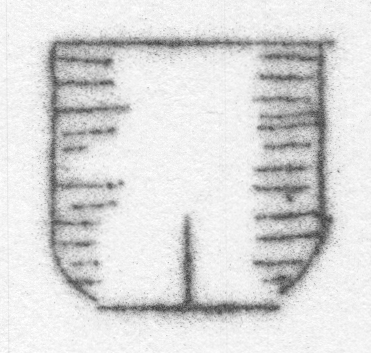- Publication title: The Science of Tiddlywinks
- Publication nickname: The Thesis
- Publisher: Cambridge University Tiddlywinks Club
- Publication date: 1955
- Publication location: Cambridge, England UK
- Authors: Members of the Cambridge University Tiddlywinks Club
- Excerpt from page: Appendix B, page 30
- Date updated: 24 September 2023; 17 August 2022
THE RULES OF TIDDLYWINKS
- The normal tournament pitch size is 2 yds. X 1 yd. the surface being a felt, needleloom, dunlipillo or other compressible material which rises from the compressed state in a vertical direction (as opposed to a circular upward motion e.g. pile carpets)
- The cup (a standard egg-cup 1½” high X 1¾” diam) is placed in the middle of the pitch.

- Each player plays with 6 counters which are:-
Two large: approx 22mms. diam. weight approx 0.9 gms
Four medium: " 16.5 " " " " 0.2 "
or 0.5 "These counters, called “tiddlywinks” are placed 3 ft. from the cup in the corners of the pitch.
- Play proceeds by each player playing in turn in a clockwise direction. The players play for start by squidging a counter to the cup; the one nearest starts.
- The aim of the game is to sink all one’s winks first using a large counter as squidger (precise size of the squidger is optional)
The first person scores 5 pts. " 2nd " " 3 " " 3rd " " 1 " " 4th " " 0 "
- Players play in pairs situated opposite one another.
- If one tiddlywink lands on top of another tiddlywink the tiddlywink underneath cannot be played until the covering tiddlywink is moved.This can be done by either the owner of the covering wink squidging it off or the other player or owner of the covered wink putting another wink upon the top of the heap and squidging the lot. (Follow throuhg through shots are quite permissible.)
- A tiddlywink is deemed as played if it is observed by a majority of persons who observed the shot to have left the pitch.
- If a tiddlywink leaves the required boundary of the pitch the player whose wink it is replaces it at the boundary point from which it left and loses a turn.
- If a player has only a covered wink left he cannot play until the covering wink is removed.